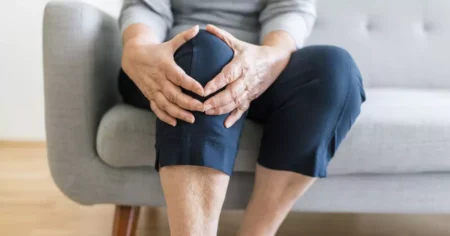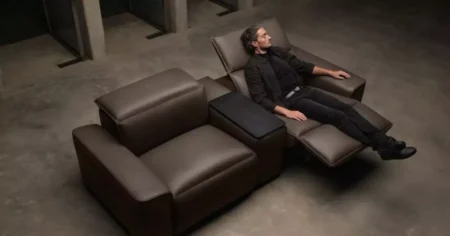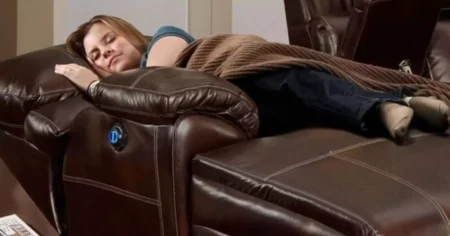Recliners are a popular choice for those seeking relaxation and comfort, offering a versatile seating option to unwind and alleviate tired muscles after a long day.
Nevertheless, questions have arisen regarding their potential negative impact on leg circulation.
In this article, we delve into the relationship between recliners and leg circulation to ascertain the validity of these concerns. We aim to determine whether recliners indeed pose any risks to our circulation.
The Importance of Healthy Leg Circulation
Healthy leg circulation plays a crucial role in various aspects of our lives. Here are a few reasons why maintaining good leg circulation is important:
1. Prevention of Blood Clots
Efficient blood circulation helps prevent the formation of blood clots, which can be life-threatening if they travel to vital organs.
Proper blood flow ensures that blood doesn’t stagnate in the legs, reducing the risk of clot formation.
2. Delivery of Nutrients and Oxygen
Adequate circulation ensures that the legs receive a sufficient supply of oxygen and nutrients.
This nourishment is essential for the proper functioning of muscles, tissues, and cells in the legs.
3. Waste Removal
Healthy blood flow facilitates the removal of waste products, such as carbon dioxide and metabolic byproducts, from the legs.
Efficient waste removal helps prevent swelling, discomfort, and muscle fatigue.
4. Regulation of Temperature
Proper circulation helps regulate the temperature of the legs, keeping them warm during colder temperatures and preventing overheating.
5. Reduced Risk of Edema
Edema refers to the accumulation of fluid in the legs, leading to swelling and discomfort.
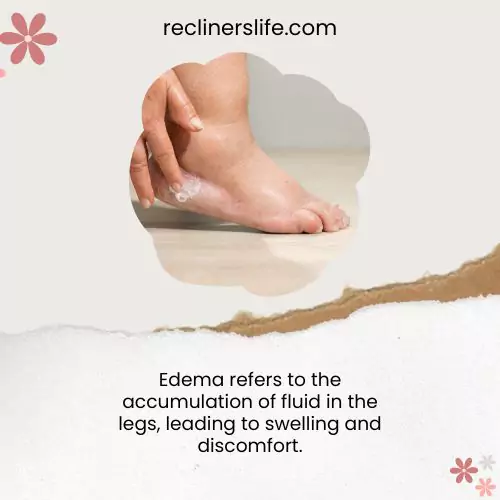
Good leg circulation helps prevent edema by ensuring fluid balance and efficient drainage.
The Relationship Between Recliners and Leg Circulation
The relationship between recliners and leg circulation is complex. On the one hand, recliners can help to improve circulation by elevating the legs.
This is because gravity helps to pull blood back up to the heart when the legs are elevated.
On the other hand, recliners can also contribute to poor circulation if they are used for long periods of time. This is because sitting in a recliner can put pressure on the legs, which can restrict blood flow.
Additionally, recliners can make it difficult to get up and move around, which can also contribute to poor circulation.
Also Read:
Are Recliners Bad For Your Neck?
Debunking Myths About Recliners and Leg Circulation
Before diving into the potential negative effects of recliners on leg circulation, it’s essential to debunk some common myths surrounding this topic.
Myth 1: Recliners Completely Cut Off Blood Flow
One common misconception is that recliners completely cut off blood flow to the legs, leading to poor circulation.
In reality, recliners do not obstruct blood flow entirely. However, specific recliner positions and prolonged use can have an impact on circulation, which we will discuss further.
Myth 2: All Recliners Have the Same Effect on Leg Circulation
Not all recliners are created equal when it comes to leg circulation. The design, features, and adjustability of recliners can vary significantly.

Some recliners are specifically designed to promote better circulation, while others may not prioritize this aspect.
It’s crucial to choose a recliner that offers proper support and encourages healthy blood flow.
Myth 3: Recliners are the Sole Cause of Poor Leg Circulation
Poor leg circulation can be caused by various factors, such as a sedentary lifestyle, certain medical conditions, or improper sitting positions.
While recliners can contribute to circulatory issues, it’s important to consider other lifestyle factors and potential underlying health conditions.
Negative Effects of Recliners on Leg Circulation
While recliners are designed for comfort and relaxation, certain factors associated with their use can potentially have negative effects on leg circulation.
1. Limited Leg Movement
When reclining in a chair, especially in a fully reclined position, your legs may be elevated and in a fixed position for an extended period.
This can restrict leg movement and result in decreased muscle activity.
Lack of movement can impede proper blood circulation and contribute to poor leg health.
2. Pressure on Blood Vessels
Some recliners, especially those with poor ergonomic design or inadequate cushioning, may exert excessive pressure on blood vessels in the legs.
This pressure can potentially restrict blood flow and lead to discomfort or numbness.
3. Postural Strain
Improper posture while using a recliner can negatively affect leg circulation.
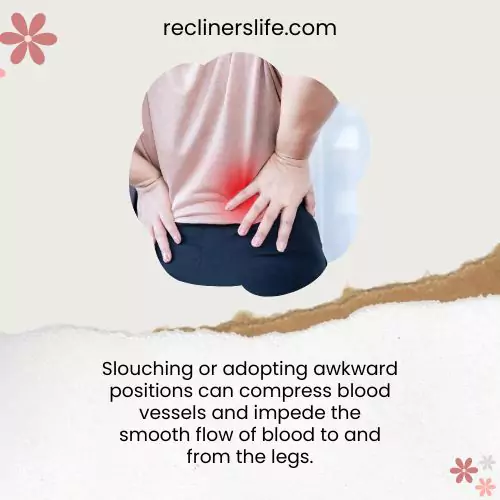
Slouching or adopting awkward positions can compress blood vessels and impede the smooth flow of blood to and from the legs.
4. Edema and Swelling
Prolonged sitting in a recliner can contribute to fluid retention in the legs, leading to edema and swelling.
Lack of movement and inadequate leg support may hinder proper drainage of fluid from the legs.
Tips for Maintaining Healthy Leg Circulation While Using a Recliner
While recliners may pose certain challenges to leg circulation, there are steps you can take to promote better blood flow and maintain healthy leg circulation.
- Frequent Leg Movement: Make it a habit to periodically move your legs while sitting in a recliner. Flex and extend your ankles, rotate your feet, and perform simple leg exercises to promote blood flow.
- Proper Leg Positioning: Aim for a position that allows a slight bend at the knees and keeps your feet comfortably supported.
- Use Cushions and Pillows: Placing a cushion under your calves can help elevate and support your legs, promoting healthy blood circulation.
- Stay Hydrated: Drink an adequate amount of water throughout the day to promote proper hydration. Good hydration supports healthy blood circulation and can help prevent issues like leg cramps.
- Avoid Tight Clothing: Opt for loose-fitting clothing while using a recliner. Tight clothing, especially around the waist, thighs, or calves, can constrict blood flow and impede circulation.
Choosing Recliners That Promote Better Leg Circulation
If you’re considering purchasing a recliner, it’s important to choose a model that promotes better leg circulation. Here are some factors to consider:
- Ergonomic Design: Look for recliners with ergonomic designs that prioritize comfort and proper body alignment. A recliner that supports the natural curves of your spine can help improve blood flow to your legs.
- Adjustability: Opt for recliners that offer various adjustable positions. This allows you to find a comfortable position that doesn’t excessively elevate or compress your legs.
- Quality Cushioning: Ensure that the recliner you choose has sufficient cushioning for optimal comfort. Look for models with generous padding and cushioning in the seat, backrest, and leg support areas.
- Size and Fit: Consider the size and fit of the recliner in relation to your body. A recliner that is too small or too big may not provide the necessary support and could affect leg circulation.
- Reputable Brands and Reviews: Research reputable brands that prioritize ergonomic design and leg circulation. Read customer reviews and testimonials to get insights into the experiences of others who have used the recliners you’re considering.
Conclusion
In conclusion, recliners can have an impact on leg circulation, but the extent of this impact depends on various factors such as recliner design, usage patterns, and individual lifestyle choices.
Remember to listen to your body and make adjustments as needed.
If you have specific concerns about leg circulation or any existing medical conditions, it’s advisable to consult with a healthcare professional for personalized advice.
Frequently Asked Questions
Can Recliners Cause Blood Clots?
Prolonged sitting, especially in a fully reclined position, can increase the risk of developing deep vein thrombosis (DVT), which is a type of blood clot.
It’s important to practice proper leg movement and avoid extended periods of sitting in one position to reduce the risk.
Are Recliners Good for Blood Circulation?
Recliners can offer comfort and relaxation, but their impact on blood circulation varies.
Choosing a recliner that promotes proper leg positioning and incorporating regular leg movement can help maintain better blood circulation.
Is Sleeping in a Recliner Bad for Circulation?
Sleeping in a recliner for extended periods may not be ideal for circulation, as it can restrict leg movement and lead to poor blood flow.
It’s recommended to sleep in a bed that provides proper support and allows for more freedom of movement.
What Are the Risks of Recliner Chairs?
While recliners offer comfort, there are some risks associated with prolonged and improper use.
These risks include poor leg circulation, muscle weakness, increased risk of blood clots, and potential strain on the neck and back if not adequately supported.

